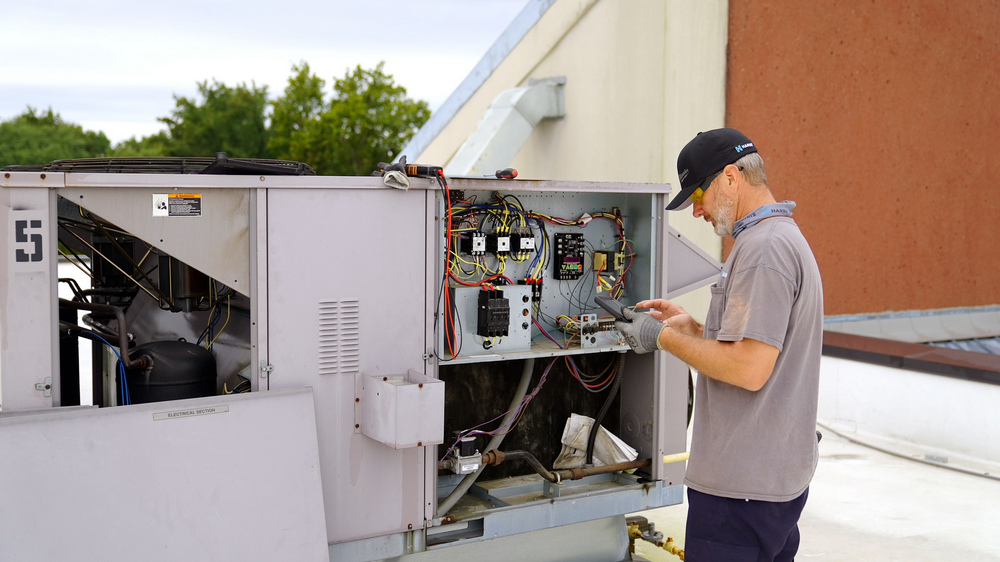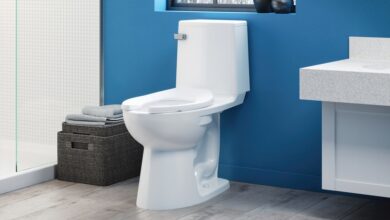Multipronged Approach: Top HVAC & plumbing infection control strategies
By Kathryn Lee

Recent years have illuminated the value of optimizing infection control in commercial spaces. Coming off the heels of the most devastating global pandemic in a century, standards in contamination management have rightly become top of mind… right alongside interest in making those same spaces more cost-effective and climate friendly.
But what HVAC & plumbing strategies help to make resilient, energy-efficient and sustainable spaces that are less liable to become the next pandemic’s petri dishes?
Let’s start by addressing ventilation and filtration. ASHRAE Standard 241 (2023) defines ventilation requirements for infection control in terms of equivalent clean airflow rates. Equivalent clean airflow includes not just outdoor air, but also filtered, recirculated air. For optimal ventilation, have a system that a.) reduces turbulence and air mixing, and b.) increases ventilation beyond code-minimums, which can assist in contaminant reduction.
For optimal filtration, use filters that catch as many harmful particles as possible. Non-healthcare facilities use Minimum Efficiency Reporting Value filters rated on a scale of 1-16. The higher the number, the smaller the particles a filter can remove. Although ASHRAE Standard 241 sets a minimum requirement of MERV 11, MERV filters rated at 13 are strongly recommended.
Filtration alone is not enough to consider a space safeguarded against infections. Most airborne pathogens fall into the fine or ultra-fine particle ranges, which can stay suspended, potentially infecting people before reaching a filter.
Now let’s look at demand control ventilation. These control sequences monitor CO2 levels and/or occupancy detection to save energy by reducing ventilation rates relative to occupancy. In the event of an outbreak, however, these controls can increase infection risk, and ASHRAE recommends they be disabled under these circumstances to prioritize indoor air quality over energy efficiency.
Since outbreaks are unpredictable, there are arguments for designing systems around worst-case scenarios; a solution that can be both inefficient and wasteful when used as the default. What’s needed is a set of controls that allow for a level of flexibility that makes a building nimble in its response to the unpredictable. Building automation becomes key here, because engineering controls for things like (but not limited to) temperature, humidity, outdoor air percentage, pressurization and exhaust can be instrumental in mitigating risk of exposure to airborne contaminants.
These building automation systems and sensors collect valuable information to keep owners and occupants aware of not just present conditions, but also ways to improve it. Further, building automation systems flag issues when they arise. To go a step further would be the integration of monitoring-based commissioning, which uses the data collected by an existing building automation system to not just control and notify of an existing issue, but to determine its root cause and (via the incorporation of machine-learning algorithms) predict possible failures before disruptions occur.
Harris Design Studio, in collaboration with Harris Telemetry, has been creating a customer-centered platform that allows building users to read data in real-time. With a system like this, buildings can prioritize energy efficiency, while also having the level of oversight and flexibility needed to shift priorities on demand.
Beyond HVAC, one must also approach infection control from the perspective of plumbing. The most significant considerations in this arena are legionella protection and waste-vent systems.
During the pandemic, when full or partial commercial building shutdowns were required, stagnation became an increased threat to domestic water systems. That stagnation can promote legionella growth, thus illuminating the need for appropriate water management plans. Fortunately, ASHRAE Guideline 12-2020 “Managing the Risk of Legionellosis Associated in Building Water Systems,” illustrates standards for developing such plans.
Additionally, waste-vent systems should be designed to ensure all water seals (or traps) on the sanitary drainage system are protected with a water seal. Without an effective seal, sewer gases, which can carry infectious particles, may enter occupied areas and expose occupants. Major plumbing codes require trap protection, and certain AHJs allow for alternative sealing methods, though these may not be as effective as a water seal.
Finally, and most importantly, today’s buildings must step away from reactive and as-needed control and maintenance strategies. Adaptation is the name of the game as environments become increasingly unpredictable. Getting advanced technologies and systems in place is only one element of an effective strategy for keeping buildings safe, healthy and energy efficient.
A proactive approach is a building’s best defense, which ASHRAE 241 also underlines. Yes, invest in quality maintenance and controls, but also prioritize development of a thorough building readiness plan and understanding of what a space’s infection risk management mode should look like.
As the saying goes, “an ounce of prevention is worth a pound of cure.”
Kathryn Lee, P.E., is an associate director at Harris.


